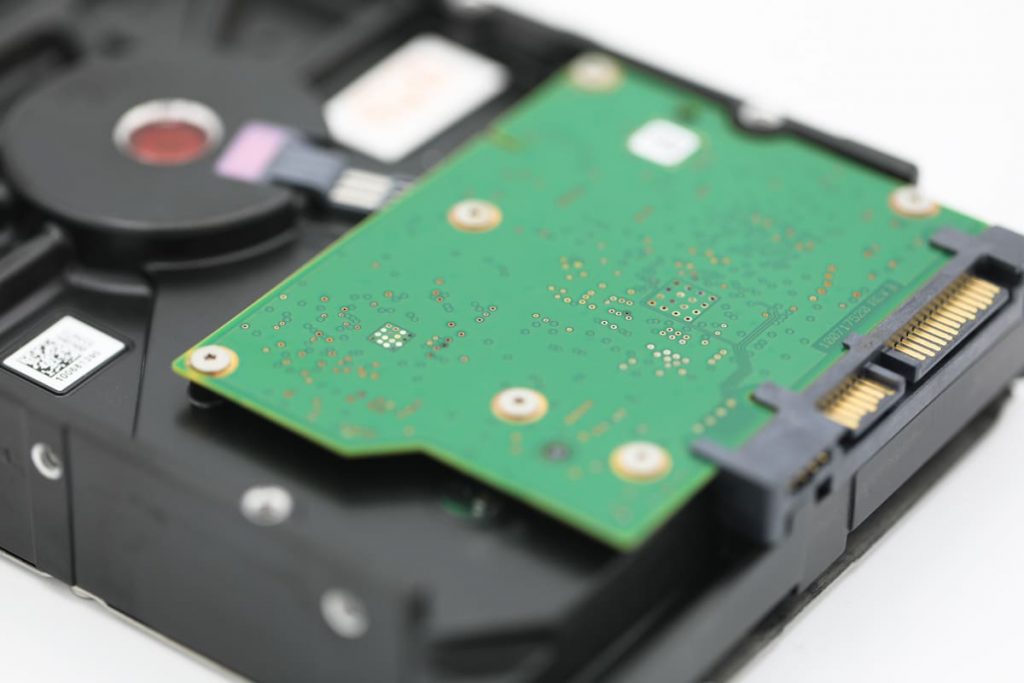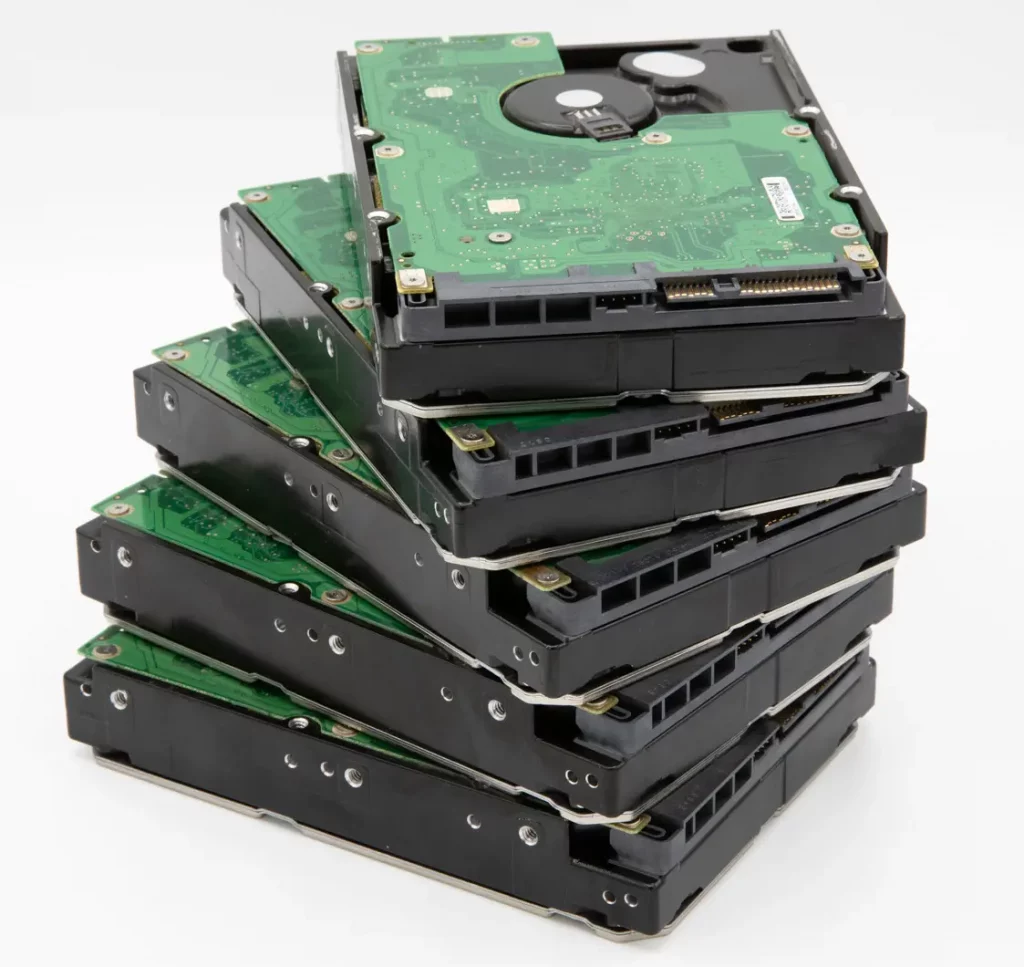SATA (Serial Advanced Technology Attachment) hard drives are one of the most popular storage devices used today. They offer faster transfer speeds, larger storage capacity, and greater reliability than their predecessor, the parallel ATA (PATA) hard drive.
However, data loss on SATA drives is still a possibility. It can happen due to various reasons, such as hardware failure, software corruption, accidental deletion, and more. In this blog, our team will discuss the features of SATA hard drives in detail and the data recovery process for SATA hard disk drives.
Features of SATA Hard Drives
SATA hard drives have a range of features that make them a preferred choice for modern computing needs. These qualities contribute to their efficiency, reliability, and versatility. Below, we’ll explore the key features that set SATA hard drives apart:
Faster Transfer Speeds
SATA hard drives offer faster transfer speeds than PATA hard drives due to their serial interface. This makes them perfect for applications that require high-speed data transfer, such as gaming, video editing, and more. The faster transfer data speeds also mean that the operating system can boot up more quickly, resulting in faster overall system performance.
More Reliable
SATA hard drives are more reliable than PATA hard drives because they use a smaller, more robust cable that is less prone to interference and damage. The smaller cable also allows for better airflow within the computer case, which can help keep the hard drive cool and prevent overheating. This, in turn, can help extend the life of the hard drive.
Larger Storage Capacity
SATA hard drives can store more data than PATA hard drives, with storage capacities ranging from 250 GB to several terabytes. This makes them a great option for storing large amounts of files, such as photos, videos, music, and other files. The larger storage capacity also means that users can store more applications and programs on their hard drives, which can help improve productivity.
Easy Installation
SATA hard drives are easy to install because they use a plug-and-play interface that does not require any special drivers or software. This means that users can simply connect the hard drive via SATA cables to their computer and start using it right away. The easy installation process also means that users can upgrade their hard drives without hiring a professional technician.
Common Causes of Data Loss on SATA Drives
Data loss on SATA hard drives is an undesirable situation that can happen for various reasons. It is essential to take preventive measures to minimize the chances of data loss.
Some of these measures include regular data backups, using reliable antivirus software, and maintaining proper power management.
Additionally, it is crucial to handle hard drives with care to prevent physical damage and ensure that your hard drive is operating within acceptable temperature ranges.

Hardware Failures
Drive Failure: As time passes, mechanical issues might occur in SATA drives, such as a faulty read/write head or motor, leading to data inaccessibility.
Controller Board Issues: Data loss can occur as a result of issues with the drive’s controller board, such as firmware corruption or electrical damage.
Cable and Connector Problems: Defective SATA cables or connectors can cause intermittent connectivity problems and data transfer failures.
Power Surges and Outages
Unexpected power surges or outages can interrupt the regular functioning of SATA drives, causing data loss or corruption. Surge protectors and uninterruptible power supplies (UPS) can help decrease this risk.
Human Error
Data loss can occur if files are accidentally deleted or if the wrong drive is formatted. Therefore, it is crucial to exercise prudence while performing tasks that require data manipulation.

Viruses and Malware
SATA drives can be infected by malicious software, leading to file corruption or deletion. To minimize the risk of data loss caused by malware, it is important to frequently update antivirus software and adopt safe online practices.
Software and Operating System Issues
Data corruption or loss can occur due to operating system crashes, file system errors, or software bugs. To prevent such issues, it is advisable to keep your operating system and software up to date, as well as perform routine maintenance.
Overheating
Ensuring proper cooling within the computer case is important to prevent SATA drives from overheating. If they do overheat, it can cause drive failure and result in data loss. It is of utmost importance to install efficient cooling mechanisms and guarantee adequate airflow to prevent this issue.
By comprehending these typical causes of data loss and taking proactive steps, you can minimize the risk of losing valuable information stored on your SATA drives.
External SATA Hard Drives
External SATA hard drives are a popular choice for those seeking to expand their storage capacity or create a portable data backup solution. These drives connect to a computer or other compatible device via an eSATA interface, which enables high-speed data transfer rates, typically up to 6 Gbps. This makes external SATA hard drives ideal for tasks that require fast and efficient access to large amounts of data, such as video editing, gaming, and multimedia content management.
They are available in various storage capacities and form factors, with the most common being 2.5-inch and 3.5-inch drives. These drives are housed in protective enclosures that may also include cooling fans or heat-dissipating designs to ensure optimal performance and longevity. External SATA hard drives offer a plug-and-play experience, as they typically do not require additional drivers or software installation, making them a convenient and reliable storage solution.
Our Data Recovery Solution for SATA Drives
PITS Global Data Recovery Services provides reliable and professional data recovery solutions for SATA hard drives. Our team of experts is experienced in handling all types of data loss scenarios, from hardware failure to accidental deletion.
With state-of-the-art technology and tools, we recover data from SATA hard drives of any size and capacity. Our team understands the importance of your data. Hence, we take all the necessary measures to ensure its confidentiality and security. Our team follows strict protocols to ensure that your data is safe and secure throughout the recovery process.
Our Data Recovery Process includes the following
Why Choose Us
PITS Global Data Recovery Services delivers premium data recovery solutions with a focus on quality and individual care for every case. As a DUNS-verified business, we are committed to excellence, ensuring 100% customer satisfaction. Our tailored service options suit a range of recovery needs and budgets. For critical situations, we offer emergency data recovery, restoring data quickly and reliably without compromising quality.

If you’re facing a data loss situation, don’t hesitate to contact us. Our 24/7 data recovery services are available to you, 365 days a year. Let us help you recover your precious data today.

We start the recovery process with a risk-free evaluation. Our technicians estimate reasons for data loss and the level of damage. Based on it, we select the most suitable recovery strategy.

With years in the data recovery industry, our company supports the highest customer satisfaction rate. We do everything to provide a positive experience for our clients.

During our remote customer file verification session, you will thoroughly review all necessary documents and records to ensure accuracy and compliance.

We offer data recovery services from over 50 locations across the US. This means that no matter where you are located, you can access our services to recover the data.

With our certified data recovery services and 99% success rate, we are confident that we can recover your precious data and get you back up and running in no time.
SATA Laptop Hard Drives
SATA laptop hard drives serve as the primary storage solution for many portable computing devices, utilizing the Serial Advanced Technology Attachment (SATA) interface for efficient data transfer and communication with the system. These drives are designed to fit into the compact form factor of laptops, with 2.5-inch drives being the most common size for this purpose.
Offering a balance between performance and affordability, SATA laptop hard drives are available in a wide range of storage capacities, making it possible for users to tailor their choice to their specific needs. They typically feature rotational speeds of 5400 RPM or 7200 RPM, with the latter offering faster read and write speeds, thus enhancing overall system responsiveness.
SATA laptop hard drives are known for their ease of installation and compatibility with a wide range of devices, making them a popular choice for upgrading or replacing existing laptop storage.
SATA hard drives are widely used today due to their faster transfer speeds, larger storage capacity, and greater reliability than their predecessor, PATA hard drives. However, data loss can still occur due to various reasons.
It is important to note that data recovery from a damaged hard drive is a complex process and should only be attempted by professionals like PITS Global Data Recovery Services.
Hence, if you are facing data loss on your SATA hard drive, do not hesitate and get in touch with our experts. We will gladly help you restore access to your valuable files. You can contact our team by filling out the form below.
Frequently Asked Questions
What is a SATA on a computer?
SATA on a computer refers to the interface used to connect storage devices like hard drives and SSDs to the motherboard. It helps data transfer between the storage device and the computer, allowing you to store and access data.
Is a SATA drive the same as an SSD?
The SATA drive and the SSD are not interchangeable terms. The SATA refers to the interface that links storage appliances, whereas the SSD is a storage technology type. SSDs can utilize the SATA interface, which is called SATA SSDs. Alternatively, SSDs can use other interfaces like NVMe (PCIe) for faster performance.
Is SATA better than HDD?
In terms of speed, reliability, and power efficiency, SATA SSDs outperform traditional HDDs. Because they have no moving parts, SATA SSDs are less susceptible to mechanical failures and allow for quicker data access, making them a popular choice for modern computing.
Can I use a SATA on a hard drive and an SSD?
Yes, It is possible to use both SATA HDDs and SATA SSDs in a computer, provided SATA ports are available on the motherboard. The SATA ports are adaptable and can accept either storage device, enabling one to customize their system according to their storage requirements.
What does SATA mean on a hard drive?
The interface utilized to connect the hard drive to the computer is denoted by SATA on a hard drive. It represents “Serial Advanced Technology Attachment” and is responsible for the transmission of data between the hard drive and the motherboard. It facilitates data storage and retrieval.


